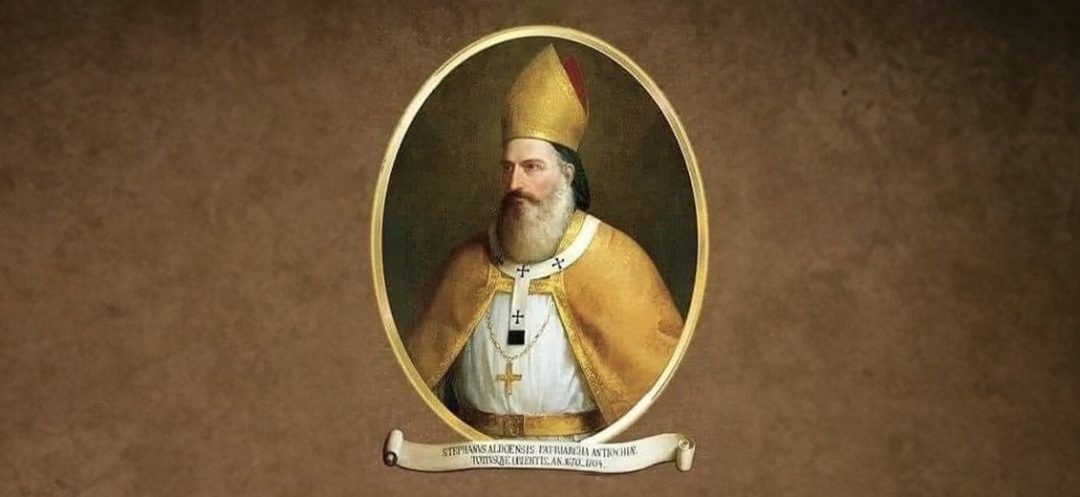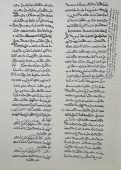
Estephanos Doueihi, the fifty-seventh Maronite patriarch to hold the seat of Antioch since its founder Saint John Maron, was a distinguished epigraphist, archaeologist, musicologist, and philologist. As a reformer of the Church and guardian of its heritage in the 17th century, he earned the title of Father of History and Preeminent Patriarch, alongside the holy founder of the 7th century.
A thousand years after Saint John Maron, a distinguished patriarch will reaffirm the concept of Lebanon by consolidating in historical writing what the first patriarch had established in the national territory. While one left Antioch for Mount Lebanon, where he was laid to rest in Kphar-Haï in 707, the other left Rome for this sacred mountain and was buried in 1704 at Saint Marina of Qannoubin.
Estephanos Doueihi was the 57th Maronite patriarch to occupy the seat of Antioch since its founder Saint John Maron. He was born in Ehden on August 2, 1630, on the feast day of Saint Stephen’s, and hence bears his name in the Syriac form. His father, Mikhael, passed away three years later, and his mother, Mariam, enrolled him in the village school to learn Syriac, as he recounted in his autobiography. Later on, at the age of eleven, Patriarch Georges Amira picked him to travel to Rome, where he stayed from 1641 to 1655.
From College to Patriarchate
In Rome, where he was known as the great Edenensis, he refused tempting offers that had enticed his fellow Maronite scholars like Ecchellensis, Sciadresis, Hesronita, Sionita, the Assemanis, and numerous others.
Many offers, such as university chairs and positions as curators of the largest Western libraries, were highly prestigious and lucrative. Instead, Estephan Doueihi insisted on returning to Mount Lebanon, feeling entrusted with a mission appointed by divine Providence. Before setting sail, he deepened his research in European libraries, and transcribed documents related to the Maronites, the Levant, and Mesopotamia.
Upon his return to Mount Lebanon, Patriarch John of Saphra ordained him a priest on March 25, 1656. On July 8, 1668, George of Bsebeel consecrated him as the Maronite Bishop of Cyprus, and on May 5, 1670, he was elected patriarch of Antioch. Henceforth, he became known in the West as Stephanus Petrus Edenensis Patriarcha Antiochenus Maronitarium (Patriarch of Antioch of the Maronites.)
Few patriarchs have been as fiercely contested as Estephanos Doueihi. He fled the tyranny of the Turks and their vassals, the Hamadehs, in northern Lebanon, seeking refuge in Kesrouan, where he encountered resistance from his own people, within the clergy and feudal system, including a powerful member of the Khazen family. Some bishops opposed all of his reform proposals and contested his election, delaying the pallium from Rome until 1673. This situation led him to leave the increasingly hostile region of Kesrouan and relocate further south to Majdel-Meouch. There, he sought refuge among the Maanid princes, and at times was revered as a saint by the Druze community. He extensively spoke of the customs of the Druze and the welcome they gave to Christians. He wrote: "In the land of Prince Fakhreddine, the Christians’ stood prouder. They started riding saddled horses, donning headscarves... carrying rifles. During Estephanos Doueihi’s tenure, churches were built in Bickfaya, Arbenié, Bchéelé, Kphar-Zayna, and Kphar-Helta. Missionaries came from the West and settled among us."
A Multilingual Patriarch
Doueihi who was trilingual, wrote flawless Syriac and Italian, and adequate Arabic, despite some syntactical errors revealing his thought process in the first two languages. Furthermore, he wrote –to a lesser extent– in Latin and was well-versed in Greek and French. However, when addressing the French consuls in Aleppo, François Picquet and François Baron, he chose to speak in Italian.
Estephanos Doueihi was also a language teacher. He taught Syriac in Geïta, and Syriac, Arabic, and Italian in Aleppo. At Mar-Shalita (Saint Artemius) in Gosta, he drafted letters in French to highlight the need for Western protection.
Between 1653 and 1658, and again during his second mission from 1662 to 1668, in Aleppo, where the Maronite community was Arabic-speaking, he preached and wrote in Arabic. He refined his Arabic skills and used garshouné (Arabic written in Syriac script) to pen several of his works, including historical texts.
 The writing of the patriarch Estephanos Doueihi in the manuscript of the “Strophes types syriaques” (Syriac type strophes).
The writing of the patriarch Estephanos Doueihi in the manuscript of the “Strophes types syriaques” (Syriac type strophes).Arabic in a Foreign Language
Despite using Arabic in the garshouné form, he incorporated liturgical texts in Syriac without providing translations, as he valued the sacredness, richness, and virtues of Syriac. However, this scholar was also wary of the challenges of translation and the distortions it might bring about.
Estephanos Doueihi’s Arabic often came across as a foreign language. This is precisely reflected in the term garshouné, meaning “foreigner”, and it was used to describe Arabic language. Doueihi's texts were deeply infused with Syriac expressions adapted into Arabic, typical of the Lebanese dialect. He occasionally made grammatical errors and rarely used the distinctive dual form of the Arabic language.
Guided by the influence of Aleppo and, more importantly, by the support of the Vatican, he contributed to the use of the Arabic language in his Church. He initially saw an opportunity for openness and universality but soon recognized the risk of cultural assimilation for his people. He then issued a warning sign by composing rhyming verses in garshouné: "Al syriani serr li, al 'arabi 'ar bi" (Syriac is a mystery within me, Arabic is a disgrace to me). This implied that openness to another culture should not come at the expense of one's ancestral and identity-defining language, the very one he referred to as "la nostra lingua siriaca" (our Syriac language).
In the "Candelabra of the Holy Mysteries" from manuscript 111 of Kreim, on page 146, Estephan Doueihi states that the Maronite Mass must be conducted in Syriac, with a specific focus on the words of the Eucharistic consecration.
‘The Candelabra of the Holy Mysteries’
The writings of this eminent patriarch highlights his vast knowledge and versatility. His most important contribution to Maronite heritage is The Candelabra of the Holy Mysteries, a comprehensive liturgical and theological work with an encyclopedic scope. It summarizes Maronite identity in all its aspects: artistic, iconographic, architectural, musical, liturgical, theological, and literary. To write the history and preserve the heritage of his people, he referred to sources gathered from European libraries, the writings of Bishop Gabriel Barcleius, and his own research across the villages and monasteries of Lebanon, where he discovered manuscripts rich with information both in the text and in the margins. Among these, he specifically mentions the book of Hasho from Maad, those from Bcheeleh and Hadshit, and a Shhimto from Mar-Aboun of Hegoula.
Estephanos Doueihi was an epigraphist, archaeologist, musicologist, and philologist. As a reformer of the Church and guardian of its heritage, he earned the title of Father of History and Preeminent Patriarch, alongside the holy founder Saint John Maron.
Read more



Comments